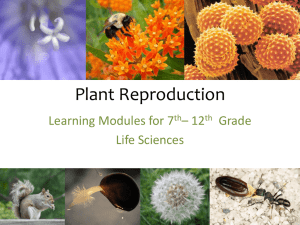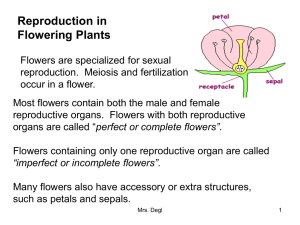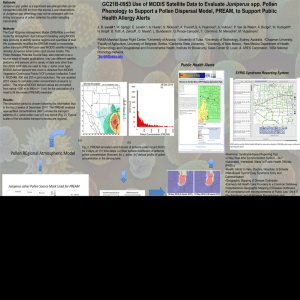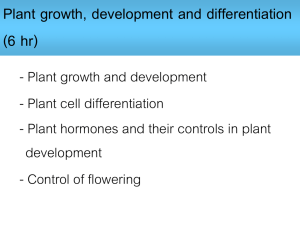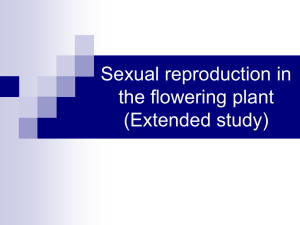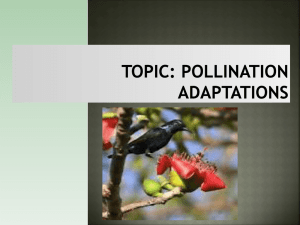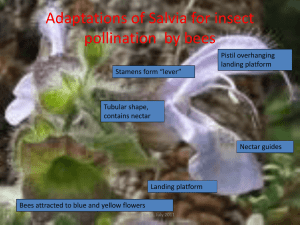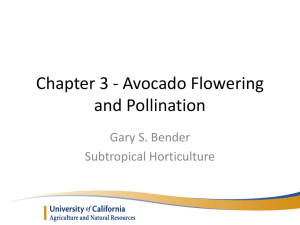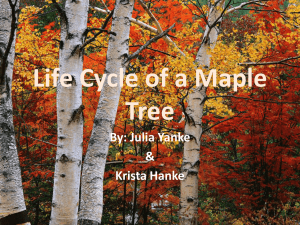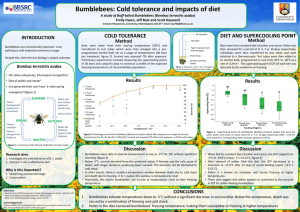Pollen and Spore Examination
advertisement
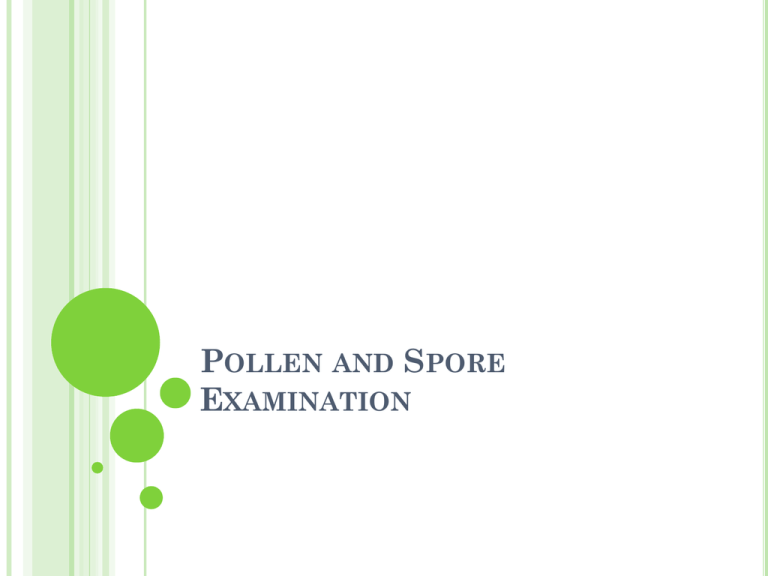
POLLEN AND SPORE EXAMINATION INTRODUCTION Pollen and spore information can be used to determine the following: Was the body moved? Where did the crime take place? What season did the crime take place? Did the crime take place in the day or night? Forensic Palynology – study of pollen and spore evidence to help solve a crime. Pollen – reproductive structure that contains sperm from seed plants Spore – reproductive structure that develops into an adult in algae, some plants, and fungi. POLLEN PRODUCERS Pollen “fingerprint” – number and type of pollen grains found in an area at a particular time of year. Plant kingdom is divided into two groups based on how they reproduce: seeds or no seeds. Seeds: Gymnosperms (evergreens) and Angiosperms (flowering plants) Nonseeds: Ferns, moss, liverworts, horsetails, club mosses GYMNOSPERMS Means “naked seed” – the seed is not protected like they are in flowering plants Most numerous group of gymnosperms are the conifers (evergreens) Produce their seeds within a cone. Here’s how: Pollination occurs when pollen lands on a female cone, grows and releases the sperm near the egg. Once the egg is fertilized, a seed develops (containing an embryo) ANGIOSPERMS Flowering plants Produce seeds within an enclosed fruit Parts of a flower: TYPES OF POLLINATION Important in forensics in determining the presence or absence of pollen in a place or on an object of a crime scene Self pollination vs. Cross pollination Self – pollen transfer from anther to stigma within the same flower. Cross – pollen transfer involving two distinct plants Self pollinating plants has lower value because they produce less pollen METHODS OF POLLINATION Wind pollination – produce a lot of pollen (good and bad) Good – well represented in the pollen profile of a crime scene Bad – less effective in determining direct links Flowers are usually nonfragrant, lack color, small Animal pollination – insects, birds, bats, monkeys Flowers are fragrant and “showy” Pollen grains are durable and can adhere to things Strong evidence of contact Produce less pollen Dandelion – wind pollinated Maple tree seeds – “helicopters” Burs – animal pollinated (poor dog) Notice the hooks on the ends of the spikes METHODS OF POLLINATION CONTINUED Water pollination Rarely preserved because it is composed of only a single layer cell wall made of cellulose Pollen will decompose if removed from water Limited use, excepts for drowned victims…contents of the lung can be emptied and analyzed. SPORE PRODUCERS Algae Adapted for dispersal in water or air Ferns and Mosses Release spores into the air Because of this, forensics is most interested in these Fungi Produce a large amount Mold, yeast, mushrooms Can be found practically everywhere Bacteria (an exception) Some bacteria produce thick-walled, resistant spores called endospores. Different in structure and aren’t used in reproduction Bacteria that causes anthrax and botulism are examples SPORE DISPERSAL Wind Water Spore ejection Animal disperal (they eat the spore and deposit it somewhere else in their feces) Spore analysis has one advantage over pollen…it is possible to grow the organism and identify the species exactly. POLLEN AND SPORE IDENTIFICATION IN SOLVING CRIMES Exine -- The hard outer layer of a pollen or spore grain Has a unique and complex structure under the microscope. Larger pollen grains can’t travel far (can only drift with the wind ½ mile) (corn) Wind-dispersed pollen grains are simple, have thin walls, easily preserved Animal-dispersed pollen grains are large, sticky, highly ornamented, thick-walled and easily preserved POLLEN AND SPORE IDENTIFICATION IN SOLVING CRIMES CONTINUED Identification of pollen and spore grains is species specific Help determine season Help determine location If not native to the crime scene, body was moved. Pollen and spores are difficult to eliminate by the suspect because they are microscopic They are resistant to dehydration and decomposition (can be found in sediment from millions of years ago) Locard’s principle is easily applied (especially animal dispersed seeds)
